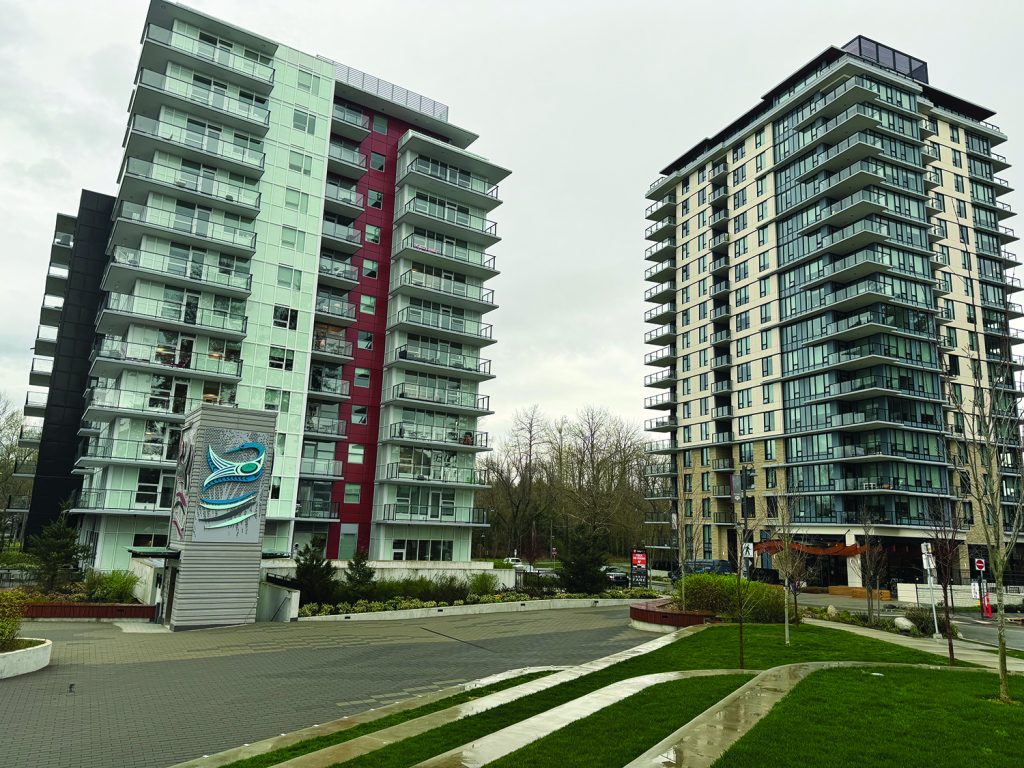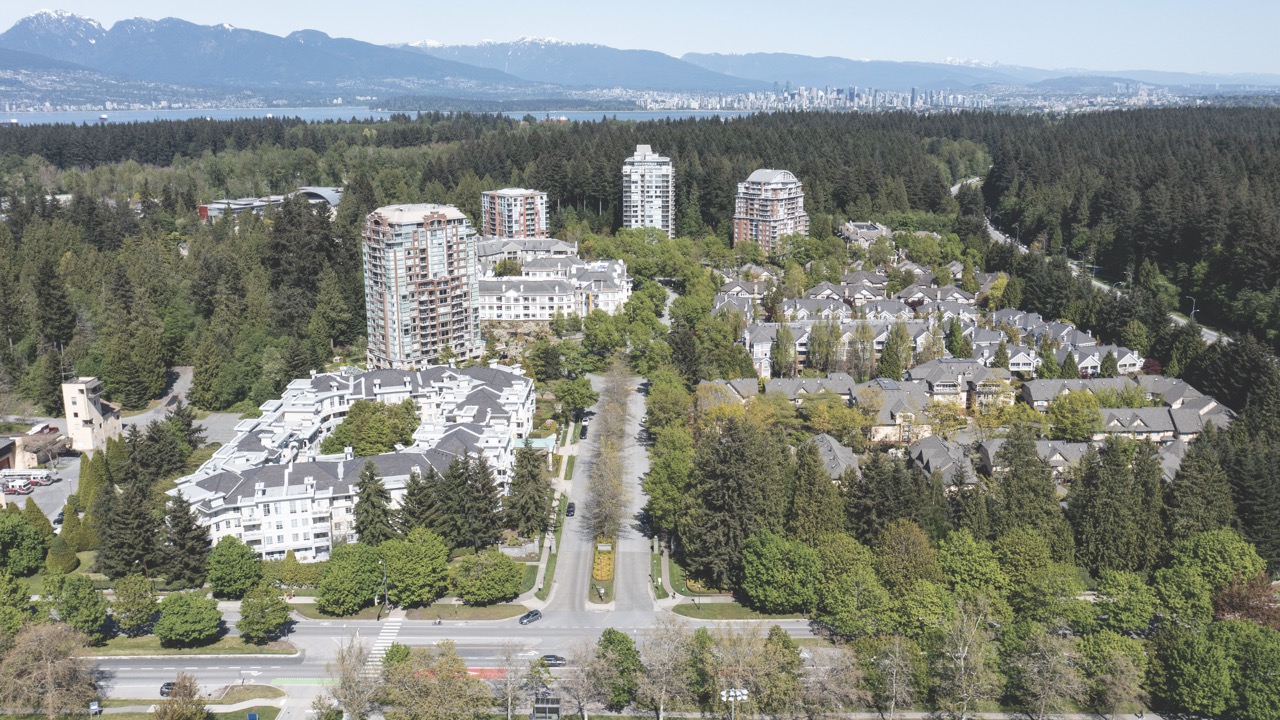The provincial government has approved UBC’s controversial land use plan that calls for doubling the population of the university neighbourhoods.
The approval came July 22 in a one-line ministerial order. “I, Anne Kang, Minister of Municipal Affairs, order that the University of British Columbia Point Grey Campus Land Use Plan amendments, approved by the UBC Board of Governors on December 5, 2023, are adopted.”
The approval, however, was not announced by the government, which left it to UBC to make the decision public. UBC made the announcement July 25 through its UBC Today newsletter. “The Province of B.C. has adopted an amended land use plan for the UBC Vancouver campus, enabling the university to begin implementing the ideas, policies and strategies developed with the community through the Campus Vision 2050 process.”
The province said it left the announcement to UBC because “the land use plan is the responsibility of the university.”
The approval means the university can now proceed with its plan to double the population of the university’s residential neighbourhoods, which include: Chancellor Place, Acadia-East Campus, Hampton Place, Hawthorn Place, Stadium and Wesbrook.
These neighbourhoods, which make up about a quarter of the 400 hectares of the Point Grey campus, now have a population of 14,900 residents. Under the plan, that will increase to 35,700 by 2050.
By then, the population density would be almost double that of downtown Vancouver with the construction of towers of up to 39 storeys in Wesbrook, 35 storeys in Acadia and 28 storeys in the new Stadium neighbourhood. It is in these three neighbourhoods where the majority of the population growth is expected.
The University Neighbourhoods Association, which represents the residents, had opposed the land use plan and had hoped that the province would require changes. Richard Watson, the UNA chair, said when the university approved the plan in December 2023 that he had misgivings that UBC’s plans would “enable the building of livable neighbourhoods, with ample green space, ecological integrity, effective transportation corridors, and services that are the basis of thriving communities.”
UNA director Bill Holmes told The Campus Resident after the province gave its approval that the decision was not a surprise, given it has just approved zoning changes for the leləm development on the University Endowment Lands along University Boulevard that involve similar density and tower heights. An ad in the Aug. 15 Vancouver Sun gave notice of the government’s intent to change zoning to permit the construction on leləm of five residential highrises of up to 34 storeys.
“(It’s) disappointing that the government is not concerned by the excessive density and building heights in the amended plan which, I understand, UBC considers necessary so that it can meet its monetary targets,” Holmes said.
And Holmes said the government should explain the basis for its approval. “The process is opaque,” he said. “We don’t know what criteria the government applies in making its decision.” He does, however, intend to find out, adding that he has just submitted a freedom of information request.
Even though the government had to approve the plan, to some extent, it passed the buck back to UBC. “UBC has full responsibility for its land as well as the amendments it makes to its land use plan,” the government said. “Campus and land governance is the responsibility of the UBC Board of Governors.” It is a different matter for the endowment lands, the government says, as they are managed by the province.
Some observers had speculated that with a provincial election set for October, the government would hold off a decision until after the votes are counted. But it remains an open question if the decision will affect the vote in Vancouver Point Grey, which includes the campus lands. Premier David Eby is not only the MLA but a university neighbourhood resident.
“I doubt that David Eby will lose votes over it,” Holmes said. “I suspect that the LUP (land use plan) won’t even be an election issue in this riding.”
The government said its approval will allow UBC to continue with its proposed development of the campus, build needed student housing and secure the funds that the university needs “to proceed with projects in which the province has interests or sees as benefits to the region.”
The 7-kilometre extension of the Skytrain to UBC is at the top of the list of the “projects in which the province has interests or sees as benefits to the region.” But it won’t come cheap. For comparison, the 16-kilometre extension from Surrey to Langley currently in development is now expected to cost $6 billion.

UBC is a property developer in addition to its role as the province’s largest university. Adding density to the residential neighbourhoods generates greater revenue to its $3.1 billion endowment. The fund, UBC says, has two income sources – private donations and “lease and rental revenues generated from the university’s land assets.”
The land use plan, UBC says, will support “a commitment by the Board of Governors to explore a financial contribution toward the regional share of the SkyTrain extension.”
But Holmes among others says the government should not have allowed UBC “to monetize its land to such an extent.” Instead, he said, the land should be used for university purposes, “including providing more rental housing for UBC faculty and staff and for others who work on the campus.”
UBC says that under the land use plan, at least 30 per cent of neighbourhood housing units will be available for rent and at least half will be priced below market for faculty, staff and other housing needs. The plan also aims to provide housing in both the residential neighbourhoods and in student housing on-campus for at least one-quarter of the total student population.
The plan, the university says, strikes “a balance between preserving and enhancing what the university campus already has—character, livability, green and open space, ecological assets—while enabling what it needs more of—academic space, affordable housing, amenities, infrastructure, and the financial resources to fund priorities.”
In addition to criticism around population growth and density, the plan met opposition because it lacks moves to provide democratic accountability and a municipal structure for the increased population in the neighbourhoods that will be the size of Port Moody or Penticton by 2050. The neighbourhoods are governed by the UBC Board of Governors. The UNA is a non-profit society established by the university to provide municipal-type services such as recreation and community news and events.
In 2022, the municipal affairs ministry published a study looking at governance issues in the endowment lands. The province has said it has no plans to examine governance issues for the campus lands and its residential neighbourhoods.
Meanwhile, UBC faculty members and staff have signed a petition calling on the university to use its land holdings to build more affordable housing and ease the region’s housing crisis, instead of using it to add “to the speculative land inflation inferno.”
“Frustratingly, it seems that the large majority of new market-rate homes built on campus since the ’90s are not owned and resided in by university students, faculty and staff,” the petition said.
It added that about half of the condominium units in the residential neighbourhoods are owned by investors, “suggesting that UBC is a net contributor to housing price inflation, with recent housing efforts doing more harm than good.”
Data from the Canadian Housing Statistics Program of Statistics Canada showed that for 2022, 51.4 per cent of condominium apartments in Metro Vancouver’s Electoral Area A—in which UBC neighbourhoods account for the great majority of the population—are not owner-occupied. That compares to just 38 per cent for the Vancouver metropolitan area and 46 per cent for Vancouver city.
WARREN CARAGATA IS A JOURNALIST, EDITORIAL CONSULTANT AND MEMBER OF THE CAMPUS RESIDENT NEWSPAPER EDITORIAL COMMITTEE.
